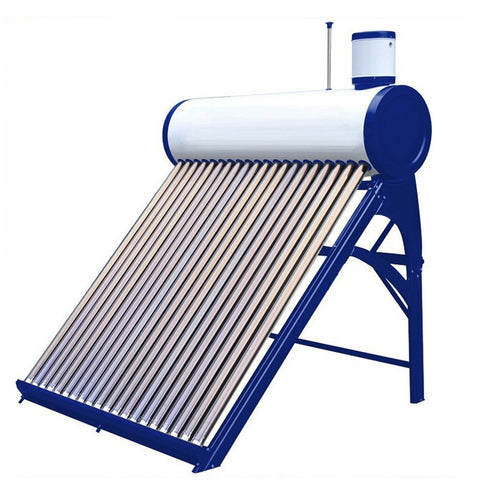Contents
Contents
Solar water heaters are manufactured as pressure and non-pressure models. Pressure model (also called high pressure solar heaters) means, water in the tank are under high pressure, it's equal to the pressure of tap water. Non pressure model (also called low pressure solar heaters) means, water in the tank is under low pressure, and is equal to the gravity of the water. There are some fundamental differences which you should be aware of before deciding which one works best for you and which one you should install.
Typically characterized by vacuum glass tubes connected directly into a tank with a small holding tank on top of it. The low-pressure gravity system consists of a vacuum glass tube collector, an insulated storage tank and optional stand parts (make up tank). The evacuated glass tubes are filled with water and exposed to sun, thus heating up the water in the glass tubes.

Typically characterized by an enclosed heating unit containing copper tubes connected indirectly to a tank. The tank may be located next to heating unit or separately such as under the roof. The high-pressure Direct Pressure Solar Water Heating System features evacuated tubes and heat pipes. The evacuated tube absorbs solar energy and converts it into heat energy, this energy is then used in the process of heating water. There is no direct connection between the heating fluids in the copper tubes and the water being heated.

After having worked with both types of heaters we highly recommend spending the additional amount and installing high pressure solar water heaters. Most of our house plans allow installation of high pressure solar heaters. There is nothing as annoying as trying to take a shower and the hot water only keeps dripping instead of having a strong steady flow. The difference in price may sway some people to choose the cheaper low pressure option, however, if you can afford it then always go with a high pressure system.
Good luck and enjoy your free hot bath :-)
Maramani